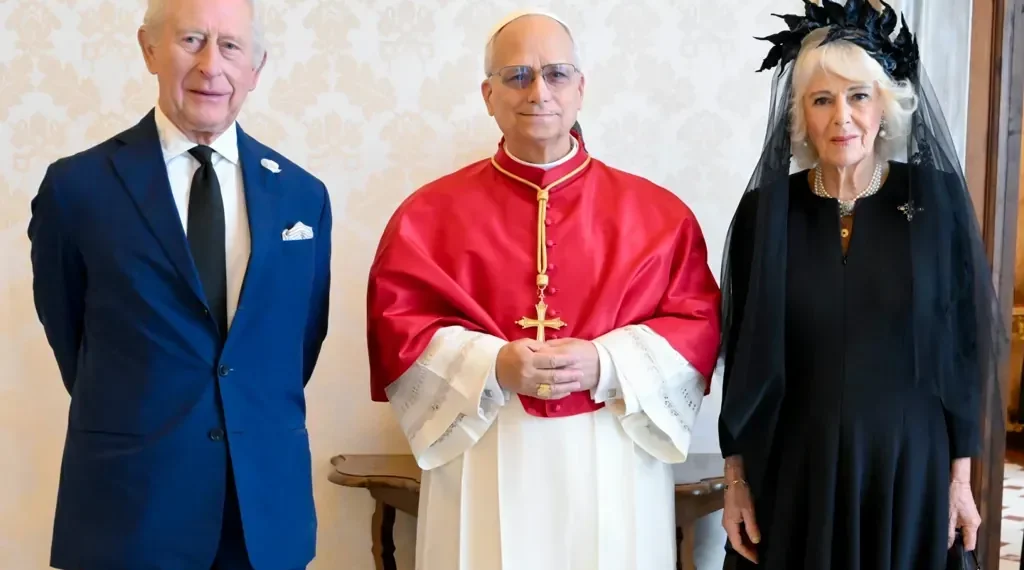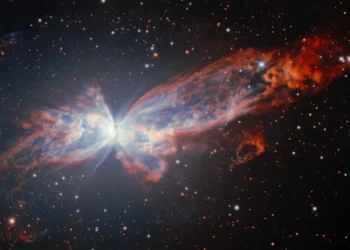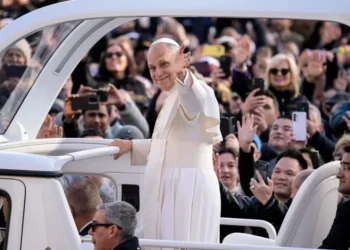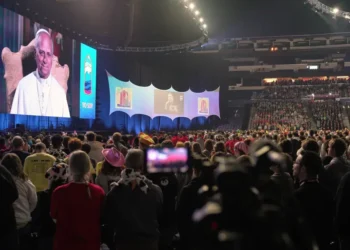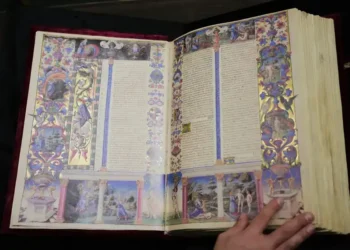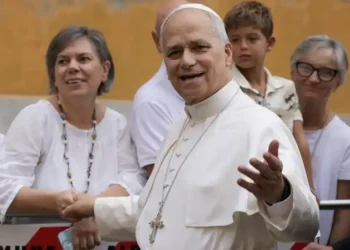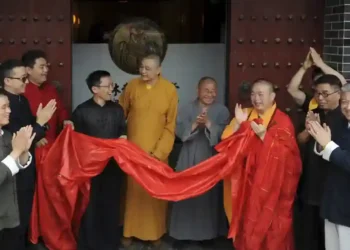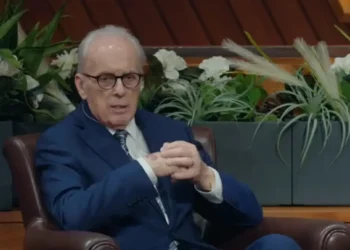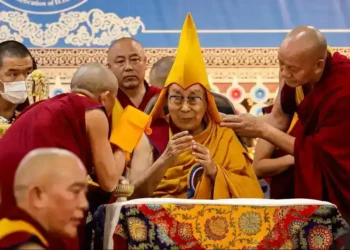King Charles III and Queen Camilla joined Pope Leo XIV in a historic prayer service at the Vatican on Thursday, marking the first time in nearly five centuries that the heads of the Church of England and the Roman Catholic Church have prayed together.
The meeting — set against the grandeur of Michelangelo’s Last Judgment in the Sistine Chapel — was both a spiritual milestone and a brief reprieve for Britain’s monarch amid renewed controversy surrounding Prince Andrew’s ties to convicted sex offender Jeffrey Epstein.
Seated on gilded thrones before the chapel’s altar, Charles and Camilla participated in an ecumenical service presided over by Pope Leo XIV and the Anglican Archbishop of York, Stephen Cottrell. The event symbolized a renewed commitment to Christian unity after centuries of division dating back to the 16th-century Reformation.
Historic Step Toward Reconciliation
Thursday’s gathering marked a rare moment of solidarity between two churches historically divided over theology, governance, and social doctrine — from papal authority to the ordination of women.
The service featured hymns performed jointly by the Vatican’s Sistine Chapel Choir and two royal choirs — St. George’s Chapel at Windsor Castle and the Chapel Royal of St. James’s Palace — reflecting the intertwined musical and spiritual traditions of the two faiths.
“This is an example of genuine and profound cooperation,” said Cardinal Vincent Nichols, the Catholic Archbishop of Westminster, in remarks to The Associated Press. He added that the king’s visit continues the path forged by Queen Elizabeth II, who met several popes during her reign and emphasized interfaith understanding.
A Visit Amid Royal Scandal
The Vatican ceremony offered Charles and Camilla a rare respite from the growing scrutiny surrounding Prince Andrew. Allegations against the Duke of York resurfaced this week following the publication of a memoir by Virginia Giuffre, who accused Andrew of sexual misconduct linked to Epstein.
The 65-year-old prince has denied all allegations and stated he will no longer use his titles, though public pressure continues to mount on Buckingham Palace to formally revoke his dukedom and evict him from his Windsor residence.
For the royal family, the visit provided an opportunity to shift focus toward the monarchy’s traditional role as a unifying spiritual and cultural force. Charles, as the supreme governor of the Church of England, has emphasized interfaith dialogue and environmental stewardship as central themes of his reign.
Postponed Pilgrimage Revived
The meeting with Pope Leo XIV had originally been scheduled earlier this year but was postponed due to the pontiff’s illness and subsequent death. Charles reportedly viewed the encounter as a priority during the Holy Year 2025, a traditional Catholic celebration held once every 25 years to mark renewal and forgiveness.
During the visit, Charles also attended a ceremony at St. Paul’s Outside the Walls, one of Rome’s major basilicas historically connected to the Anglican tradition. There, he received the honorary title of Royal Confrater, symbolizing spiritual fellowship between the Vatican and the British monarchy.
In a reciprocal gesture, Pope Leo was named Papal Confrater of St. George’s Chapel, Windsor Castle, reinforcing a symbolic bond between the two institutions.
Charles sat in a specially crafted chair bearing his royal coat of arms and the Latin phrase Ut Unum Sint — “That they may be one” — echoing his long-held call for interfaith unity. Officials said the chair will remain at the basilica for future royal visits.
Bridging Centuries of Division
The Anglican-Catholic divide traces back to 1534, when King Henry VIII broke from Rome after the pope denied his request for an annulment. Since then, both churches have evolved separately, though recent decades have seen renewed efforts to reconcile shared beliefs and address differences over gender roles, authority, and social issues.
Successive popes, including John Paul II and Benedict XVI, cultivated dialogue with Anglican leaders. However, divisions persist — particularly regarding the ordination of women and the Church of England’s evolving stance on same-sex relationships.
The Vatican visit, therefore, carried symbolic weight: an attempt to reaffirm mutual respect amid deepening theological and social rifts.
Cardinal Nichols said the event reflected Charles’s broader vision of faith in public life. “He recognizes not only his constitutional duty as supreme governor of the Church of England,” Nichols noted, “but also his responsibility to protect freedom of religion and the role of faith in society.”
Anglican Communion in Tension
Even as Charles emphasized unity abroad, the Anglican Communion faces renewed internal strain following the election of the first female Archbishop of Canterbury, Sarah Mullally.
Mullally, who was not present at the Vatican ceremony pending her formal installation, has drawn criticism from conservative Anglican leaders. The Global Fellowship of Confessing Anglicans (Gafcon) — representing many Anglican provinces, particularly in Africa — recently declared its intention to sever historic ties with the wider Communion.
Gafcon leaders cited disagreements over gender and LGBTQ inclusion, denouncing the Church of England’s progressive stances as incompatible with traditional doctrine. The group’s statement also rejected the legitimacy of female bishops, describing Mullally’s election as “a defining point of division.”
The developments threaten to formalize a split within one of the world’s largest Christian denominations, which counts more than 85 million members across 165 countries.
Faith Diplomacy and Global Perception
For King Charles, the Vatican visit also underscored his evolving role as a statesman of faith — balancing his Anglican heritage with his public advocacy for religious coexistence. His address emphasized the shared moral foundation of Christianity and the need for “dialogue over division.”
Observers in both London and Rome described the event as an exercise in “faith diplomacy,” a continuation of Queen Elizabeth II’s legacy of building bridges between institutions often separated by history and dogma.
Vatican officials said the joint prayer service demonstrated that centuries of estrangement could yield to renewed cooperation on issues such as poverty, climate change, and migration — areas where both the Vatican and the British Crown have sought to exert moral influence.
A New Chapter in Christian Relations
As the Vatican’s bells rang over St. Peter’s Square, Charles and Camilla departed after an exchange of symbolic gifts. The moment — steeped in ritual and history — signaled the opening of a new chapter in relations between the Anglican and Catholic churches.
While divisions remain, both sides framed the encounter as a testament to shared values. For Charles, who has long advocated interfaith respect, the visit reinforced his belief that unity and dialogue remain the most powerful tools of faith in a fractured world.
This article was rewritten by JournosNews.com based on verified reporting from trusted sources. The content has been independently reviewed, fact-checked, and edited for accuracy, neutrality, tone, and global readability in accordance with Google News and AdSense standards.
All opinions, quotes, or statements from contributors, experts, or sourced organizations do not necessarily reflect the views of JournosNews.com. JournosNews.com maintains full editorial independence from any external funders, sponsors, or organizations.
Stay informed with JournosNews.com — your trusted source for verified global reporting and in-depth analysis. Follow us on Google News, BlueSky, and X for real-time updates.
